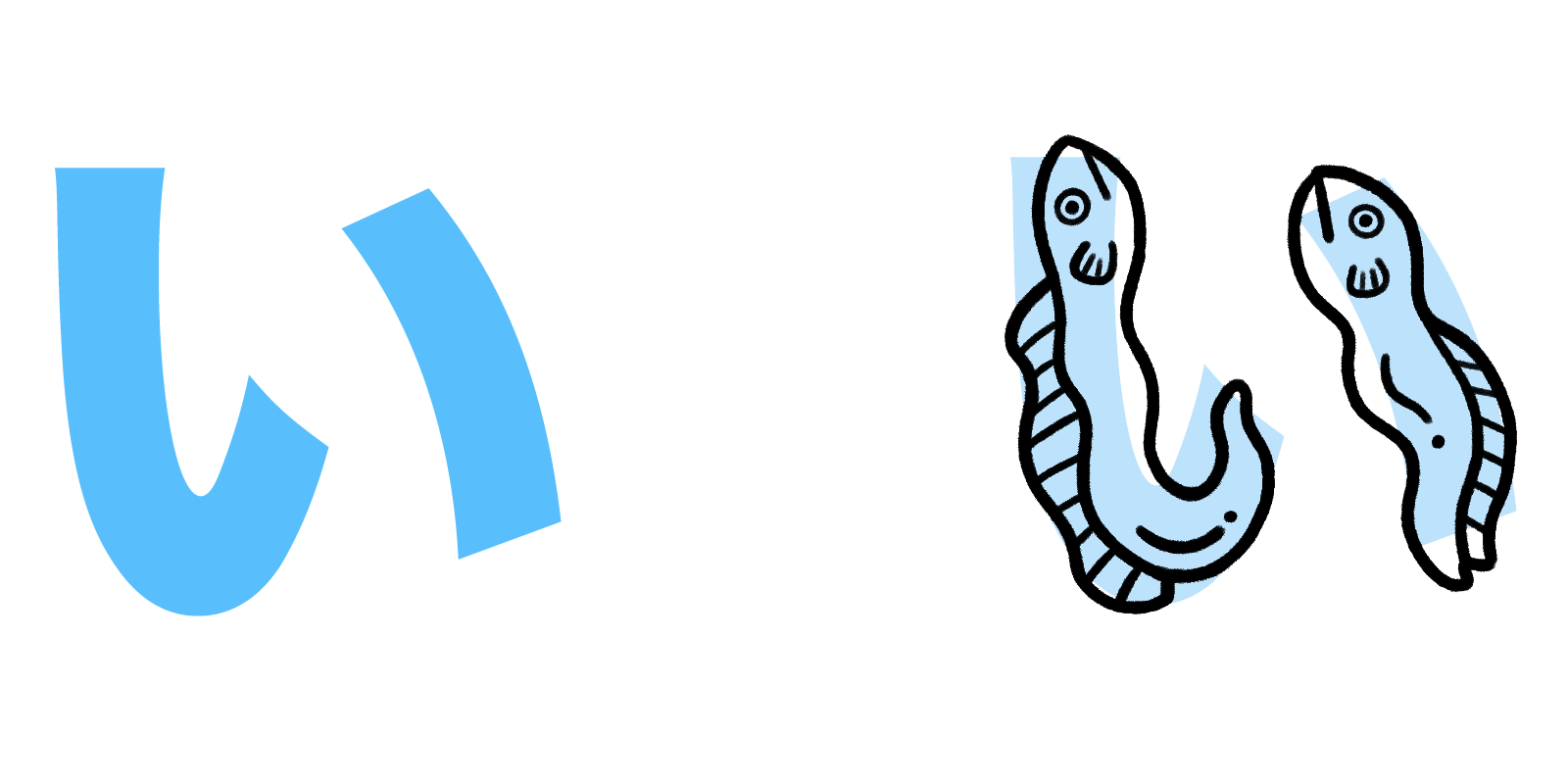Textbooks aren't the way to learn kana, the Japanese alphabets.1 It's way easier than that. I'm selling back my Kana from Zero! unused.
Here's what you do.
Hiragana
Making a mnemonic chart
- Get or make a chart of the hiragana (gotta start somewhere).
- Get or make a chart with mnemonics to help you remember the shapes. For example, い, i (pronounced ee), could be a couple of eels:2

- Practice writing these characters while using the mnemonics.
- It'll be full of things that makes sense to you, so that you can remember
- There are a lot of different arrangements people put the letters in. I prefer the traditional (shown above). You can get this by printing the image below and marking it up:
Playing a game
It helps to just make copies of the chart in your spare time, but as you progress, I think you may find this game to be helpful: the Hiragana Drag-n-Drop Game. Get this and I think your time learning kana will be cut in half.
Katakana
Two special problems

In katakana, you'll find some characters that look way too much alike:
シ (shi) and ツ (tsu). It seems the only difference is in the angles.
I remember it thus: a burashi (brush) is for brushing up, so if you imagine it to be a brush, the brush itself is written with an upward stroke, and the bristles are kind of flat -- not down.
 The second character ツ can be imagined as two surfers diving down into a tsunami. OK, that's a little scary, but I can't think of any other English words starting with "tsu."
The second character ツ can be imagined as two surfers diving down into a tsunami. OK, that's a little scary, but I can't think of any other English words starting with "tsu." Similarly, ソ (so) is someone sewing down with a needle (left stroke) into a cloth (right stroke); and ン (n) is a nice noseless smile of someone saying "mmm" or "nnn" (image to the right).
Similarly, ソ (so) is someone sewing down with a needle (left stroke) into a cloth (right stroke); and ン (n) is a nice noseless smile of someone saying "mmm" or "nnn" (image to the right).Mnemonics for directions of things help for other letters too. How do I remember if サ (sa) has the curvy thing going back left, or forward? It looks like a saddle to me. So I think, "Back in the saddle again."
Now go have some fun learning a secret code that nobody but you can read. Oh, and about 130 million Japanese.
1Effectively, Japanese has two alphabets. That's not as bad as it sounds: we have two as well, upper and lower case. (Technically they're "syllabaries," but let's not get technical. Thanks to the commenter who pointed this out.)
One is hiragana: a beautiful, flowing, smooth set of glyphs used for native Japanese words -- おはようございます; どうもありがとう.
The second is katakana: pointy, angular shapes used for foreign import words: オレンジ ("orenji," or orange); インターネット("intaanetto," or Internet).
2Tofugu has a lot more of these images -- check 'em out.


Thank you so much! I'll certainly make use of what you wrote.
ReplyDeleteJust a small correction: Maybe use "writing script" instead of alphabet.
ReplyDeleteJapanese doesn't have alphabets, it has 2 syllabaries (the kana) and 1 logographic writing system (kanji).
We also don't have two alphabets, just one. Upper and lowercase are considered part of the same alphabet. Just like cursive versus print, it's the same alphabet, just a different script.
I thought I'd replied earlier; sorry. You're absolutely right: technically they're "syllabaries," but I don't want to get technical. Thanks for pointing this out.
Delete